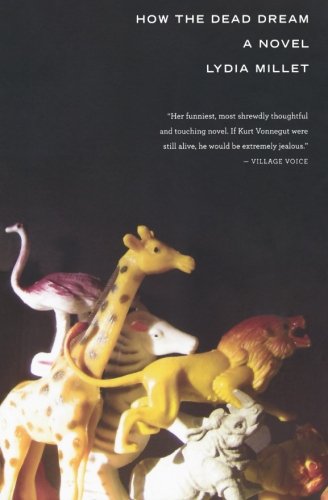The story of Thomas is the story of a man with an inborn facility for all things economic. Called T. by his family, friends, and a close third-person narrator, he grows from a child with a fetish for American currency—secreting money in his mattress and on his person—to a successful real estate developer. And yet—against all expectations—he is not a villain. He remains sympathetic, in an Alex P. Keaton (from Family Ties) sort of way. His early childhood schemes for the accumulation of capital, as amoral as they are, tend to be comic and charming enough to keep us on his side. The villain of the story is institutional and biological—the institutions that lead to the expansion of the civilized world, and to the desire to procreate and expand the population.
Ultimately, however, How the Dead Dream is concerned not with gain but with loss. As T. begins to lose loved ones (a significant other, a runaway father, a mother in fragile health with a declining connection to her memories) he becomes acutely aware of the way his chosen field encroaches on the natural world and endangers animal species. This turns T.’s mind toward animals on the outs and leads him to a private journey invading their spaces, their dwindling habitats both fabricated (zoos) and real (untouched places in the natural world).
During the course of T.’s journey, he moves through a series of artificial worlds. He builds developments in the desert—homes where no homes should be. There are the show houses. There are the zoos. T. breaks into the latter—which he sees as mausoleums, the last resting places of dying breeds—to spend time with (and eventually sleep in enclosures with) endangered species. Even money is a sort of artificial world, the bills and numbers representative of the value of work or property. While the satirist George Saunders finds a hyperreality in these artificial worlds, Millet dampens them down with her language, her tense:“When a thing became very scarce, that was when it was finally also seen to be sublime and lovely.”
The book’s final move is from T.’s invasion of artificial animal worlds to a breakthrough into the unregulated, dangerous real world, the enormously satisfying result of which I will leave to the reader to discover. The book ends with a haunting, beautiful image that will stick with you.
What Millet has managed to do with How the Dead Dream and 2005’s...
You have reached your article limit
Sign up for a digital subscription and continue reading all new issues, plus our entire archives, for just $1.50/month.
Already a subscriber? Sign in





